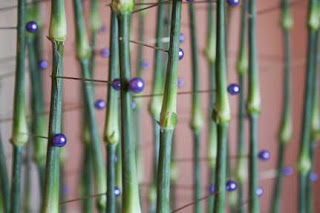
(Click on the title for a link to the Adbusters site)
Now that the days are getting longer and the weather is warming up, most of us are out and about a bit more. Windows are open to air the rooms out and the television doesn’t get as much use as the great outdoors beckons. We do tend to watch less telly as the weather improves and other activities take preference, however watching TV can often be the easy option. A group of activists in America called Adbusters are challenging our telly viewing habits by setting up a telly free week to run from the 25th of this month. The campaign encourages us to switch off at home but they are actively targeting TV’s in public areas such as airports, banks and any other communal place. Their idea is to switch off the sets with a remote control on a key fob to spare us from reality programmes and adverts. This of course is met with cheers from some people. Others are not so happy as they feel that their freedom of choice is being taken away from them. Thankfully we here in Inishowen are not swamped with this kind of thing and watching a bit of telly, like most things in moderation, is all part of a balanced diet, which could include playing games with your children, visiting friends, walking the beaches and cleaning the house (with plenty of vinegar of course)!!
Environmental.
Now that the days are getting longer and the weather is warming up, most of us are out and about a bit more. Windows are open to air the rooms out and the television doesn’t get as much use as the great outdoors beckons. We do tend to watch less telly as the weather improves and other activities take preference, however watching TV can often be the easy option. A group of activists in America called Adbusters are challenging our telly viewing habits by setting up a telly free week to run from the 25th of this month. The campaign encourages us to switch off at home but they are actively targeting TV’s in public areas such as airports, banks and any other communal place. Their idea is to switch off the sets with a remote control on a key fob to spare us from reality programmes and adverts. This of course is met with cheers from some people. Others are not so happy as they feel that their freedom of choice is being taken away from them. Thankfully we here in Inishowen are not swamped with this kind of thing and watching a bit of telly, like most things in moderation, is all part of a balanced diet, which could include playing games with your children, visiting friends, walking the beaches and cleaning the house (with plenty of vinegar of course)!!
Environmental.














































